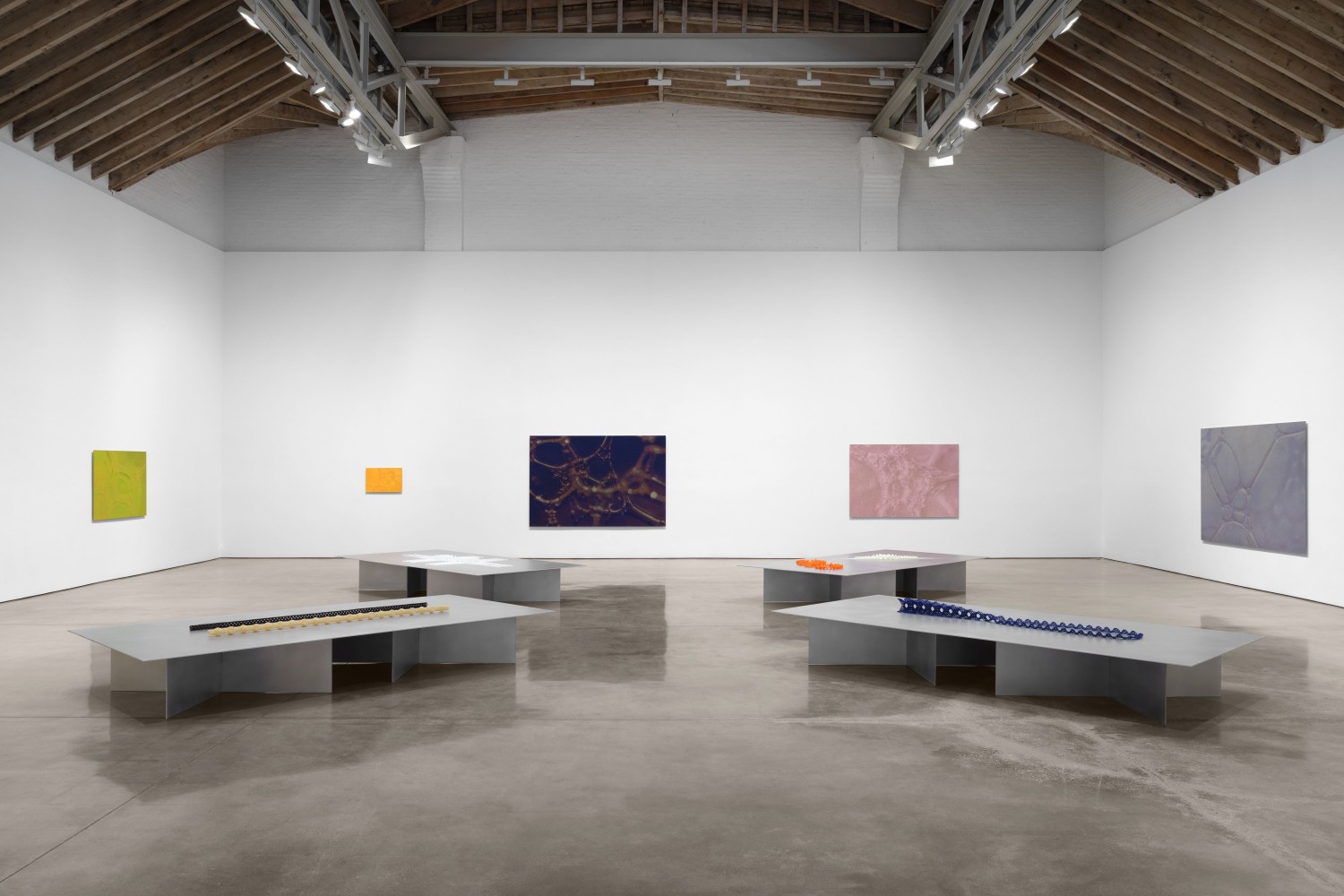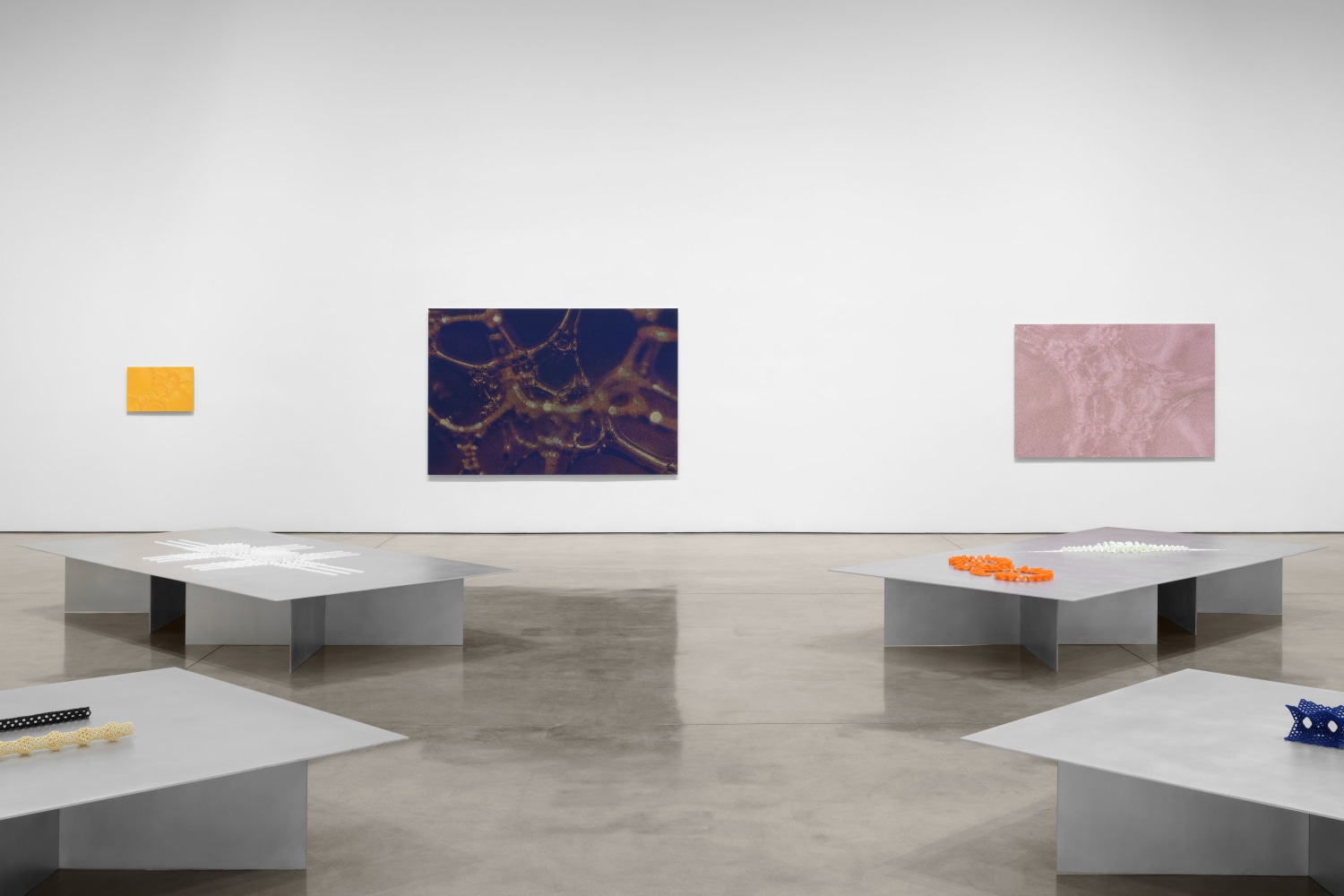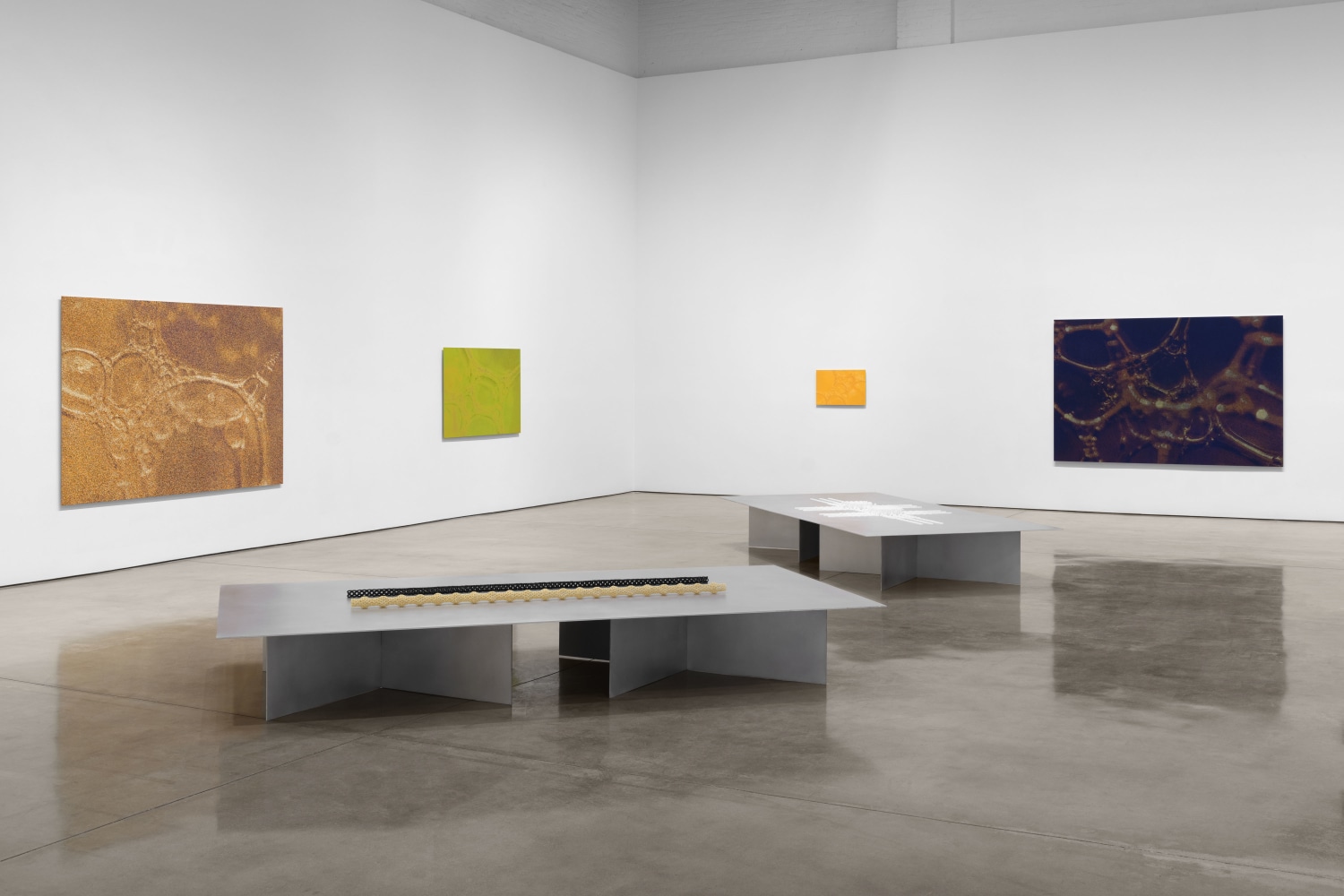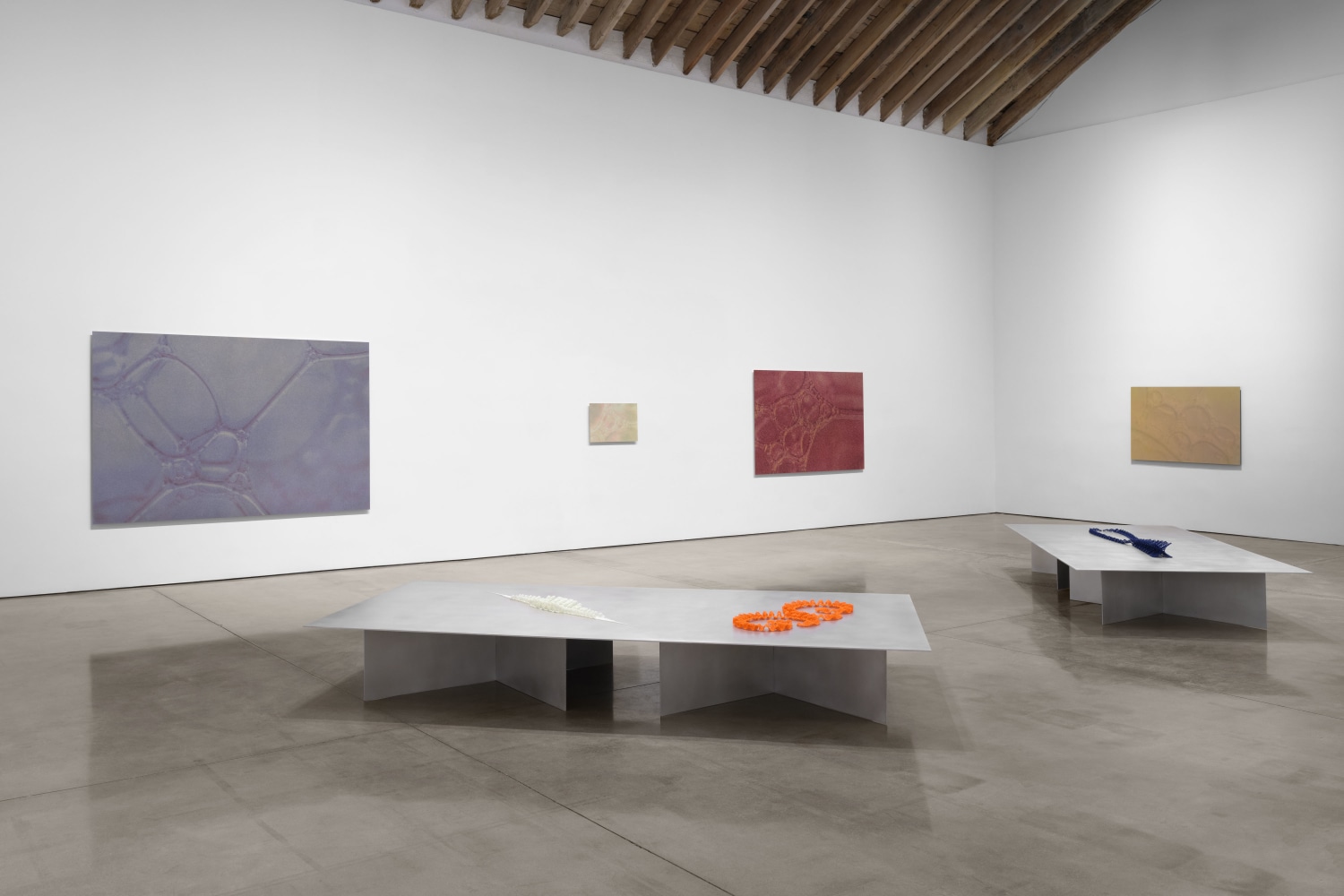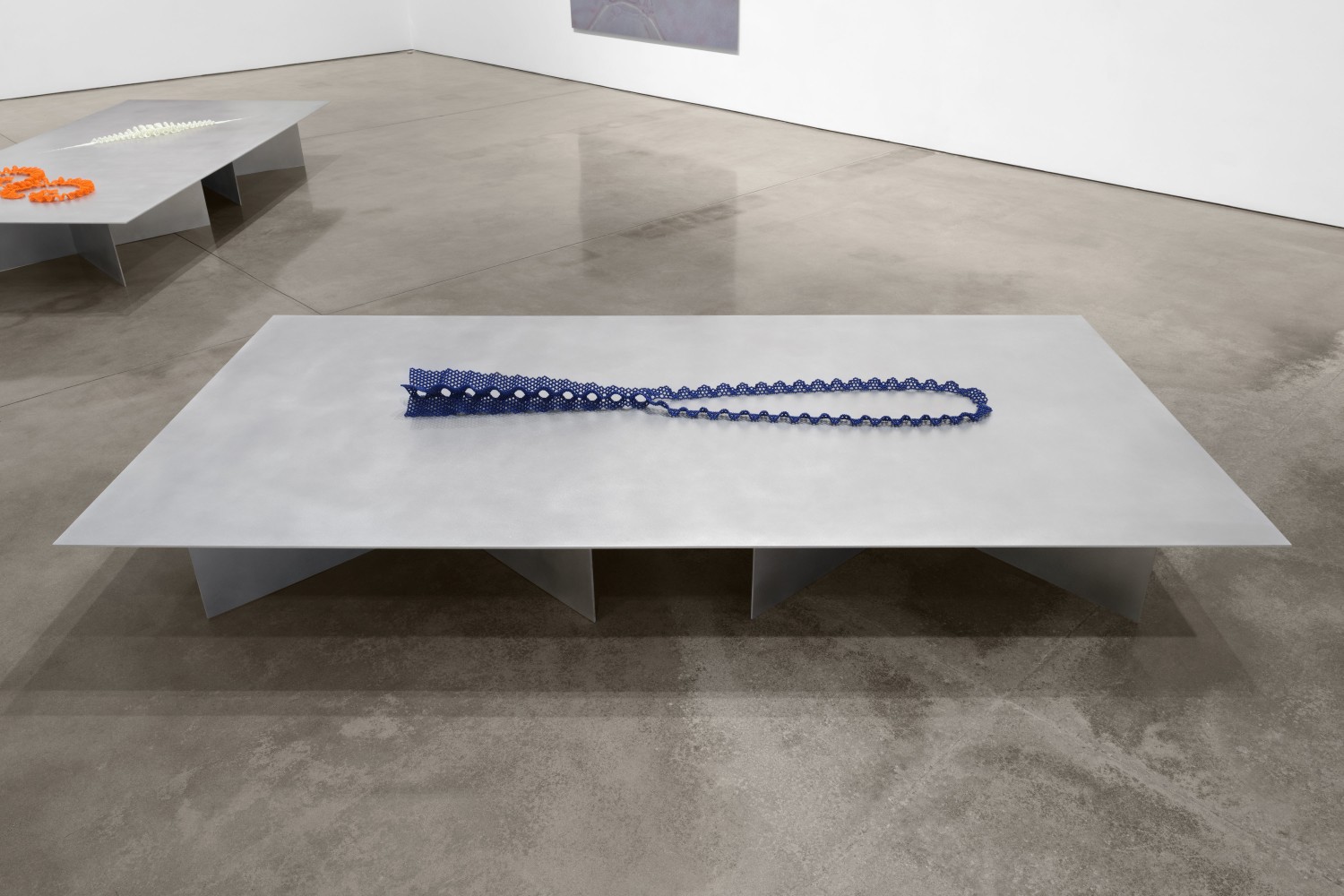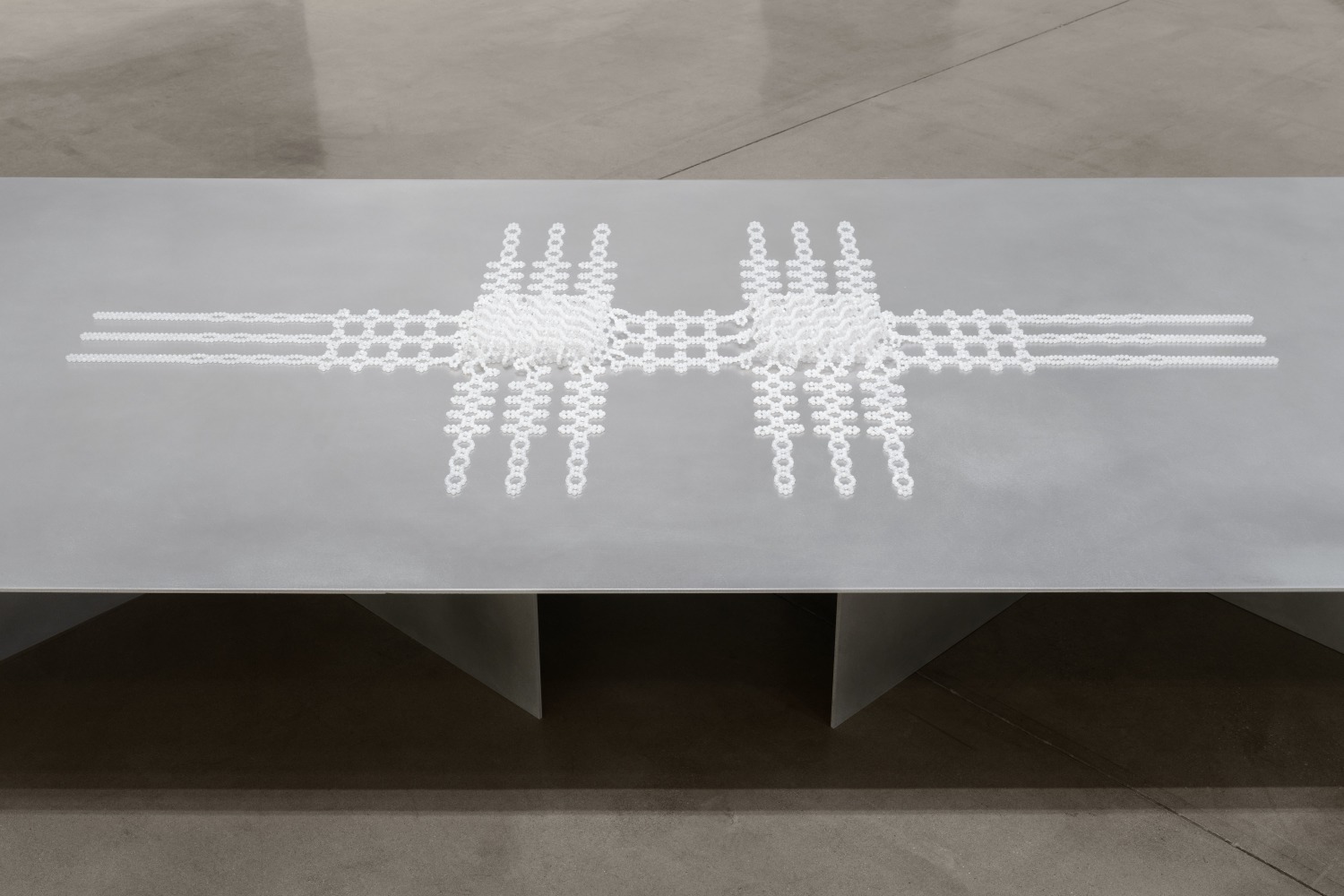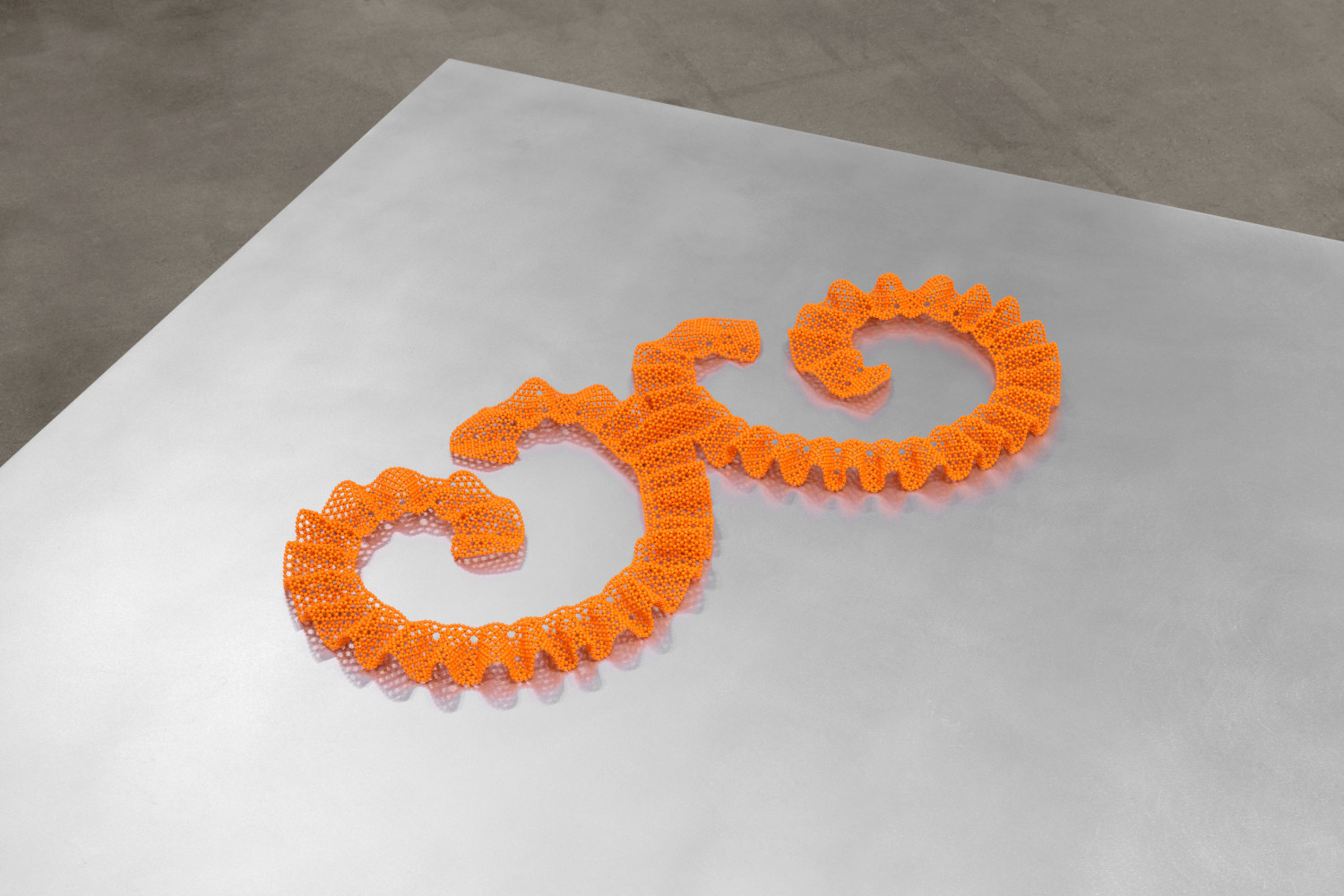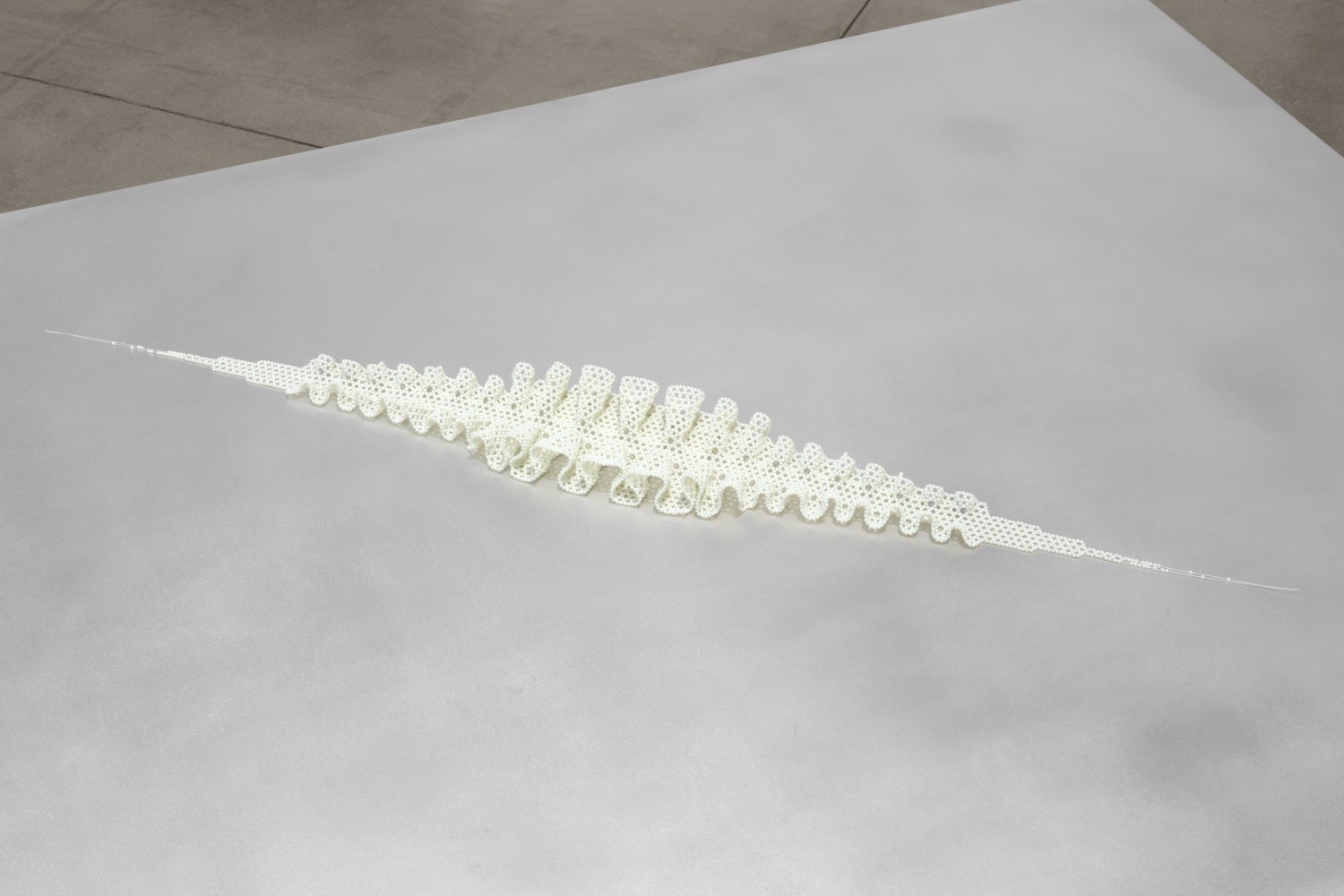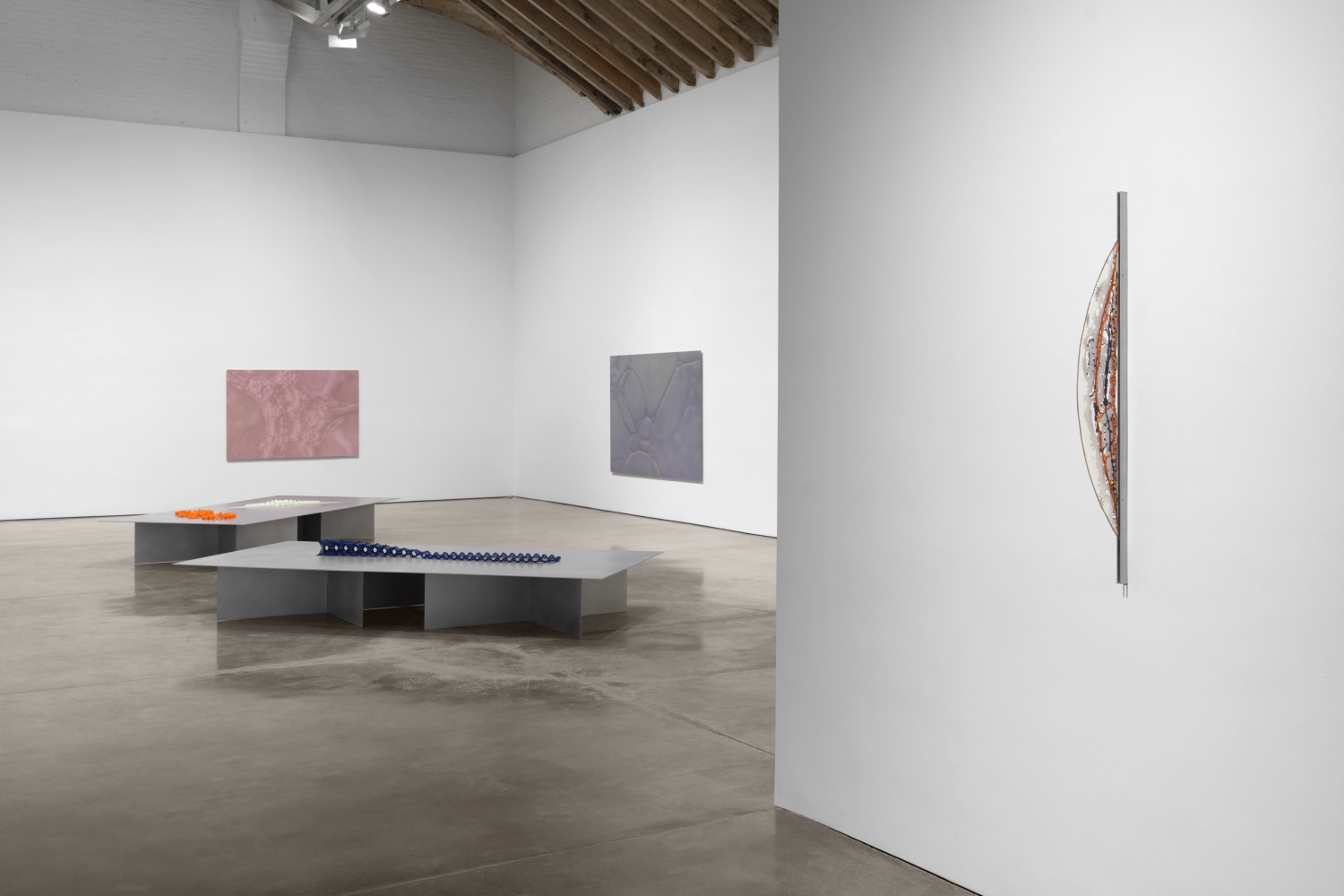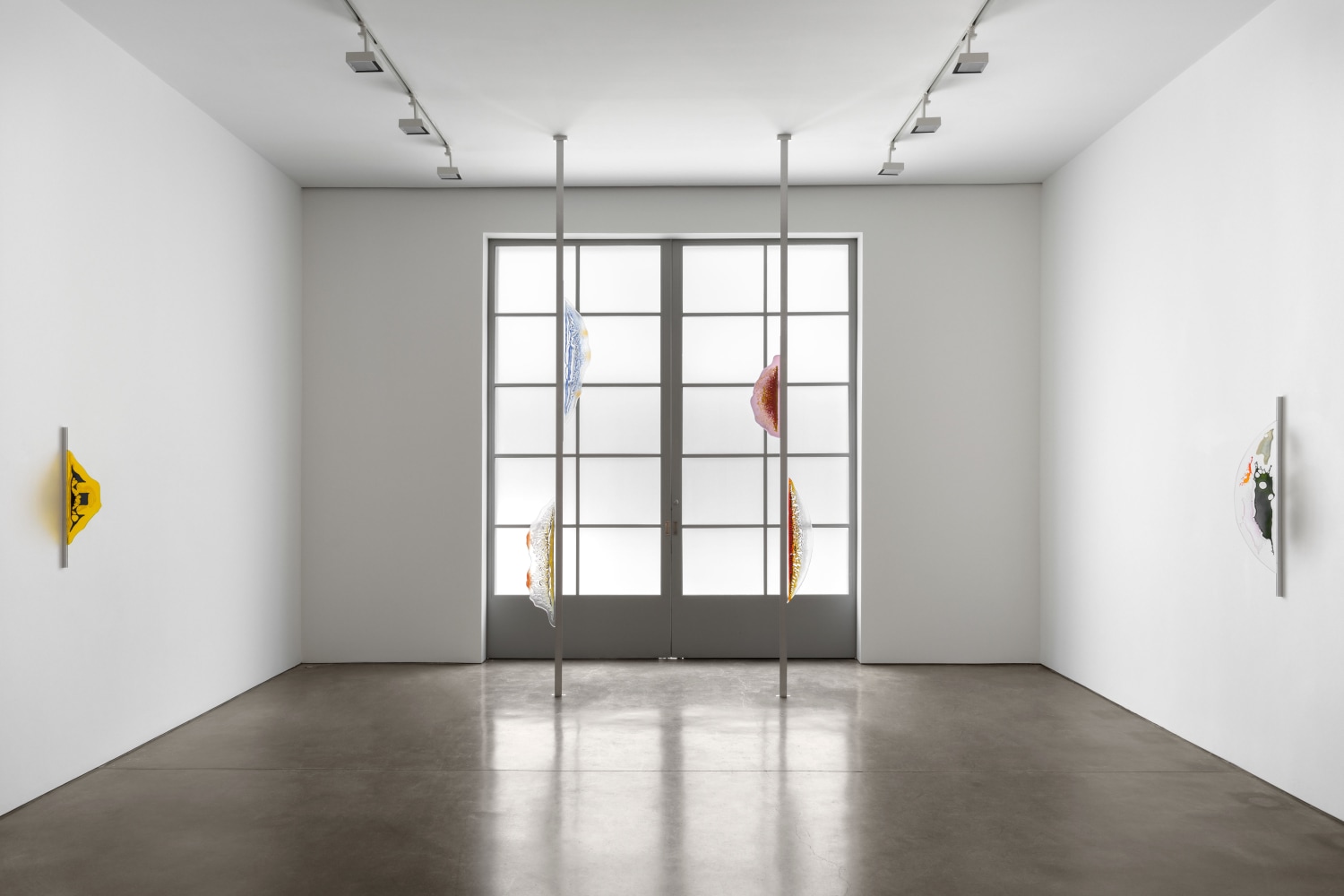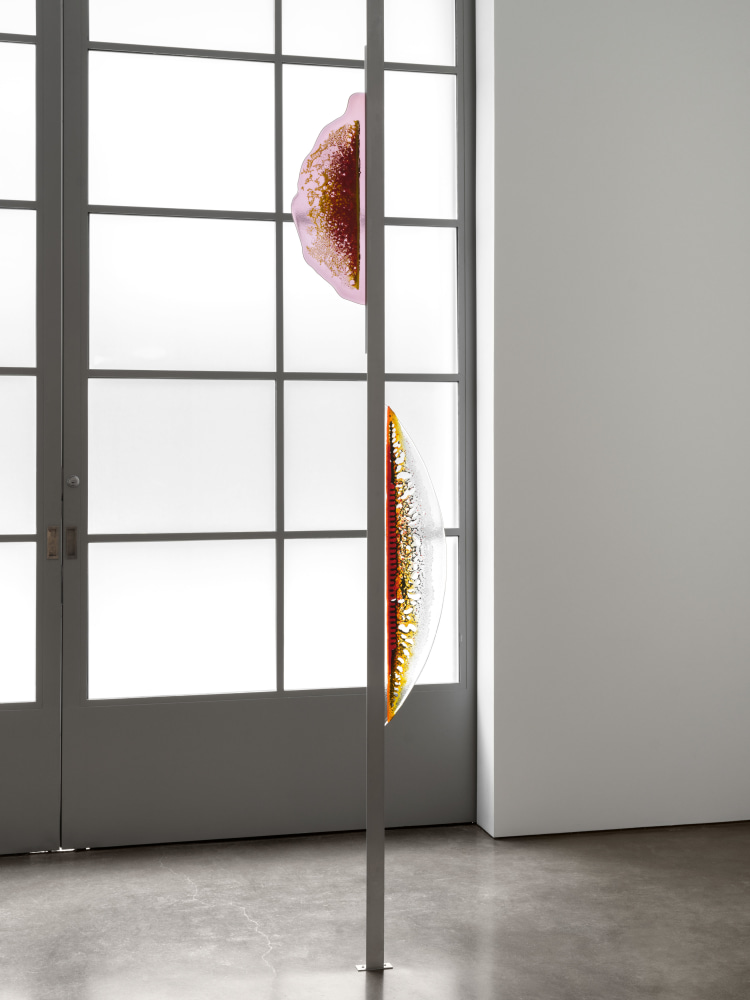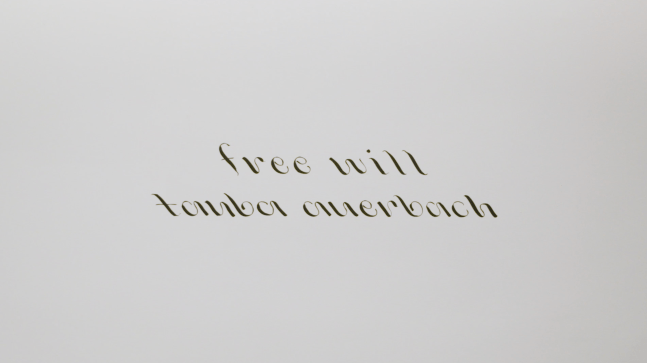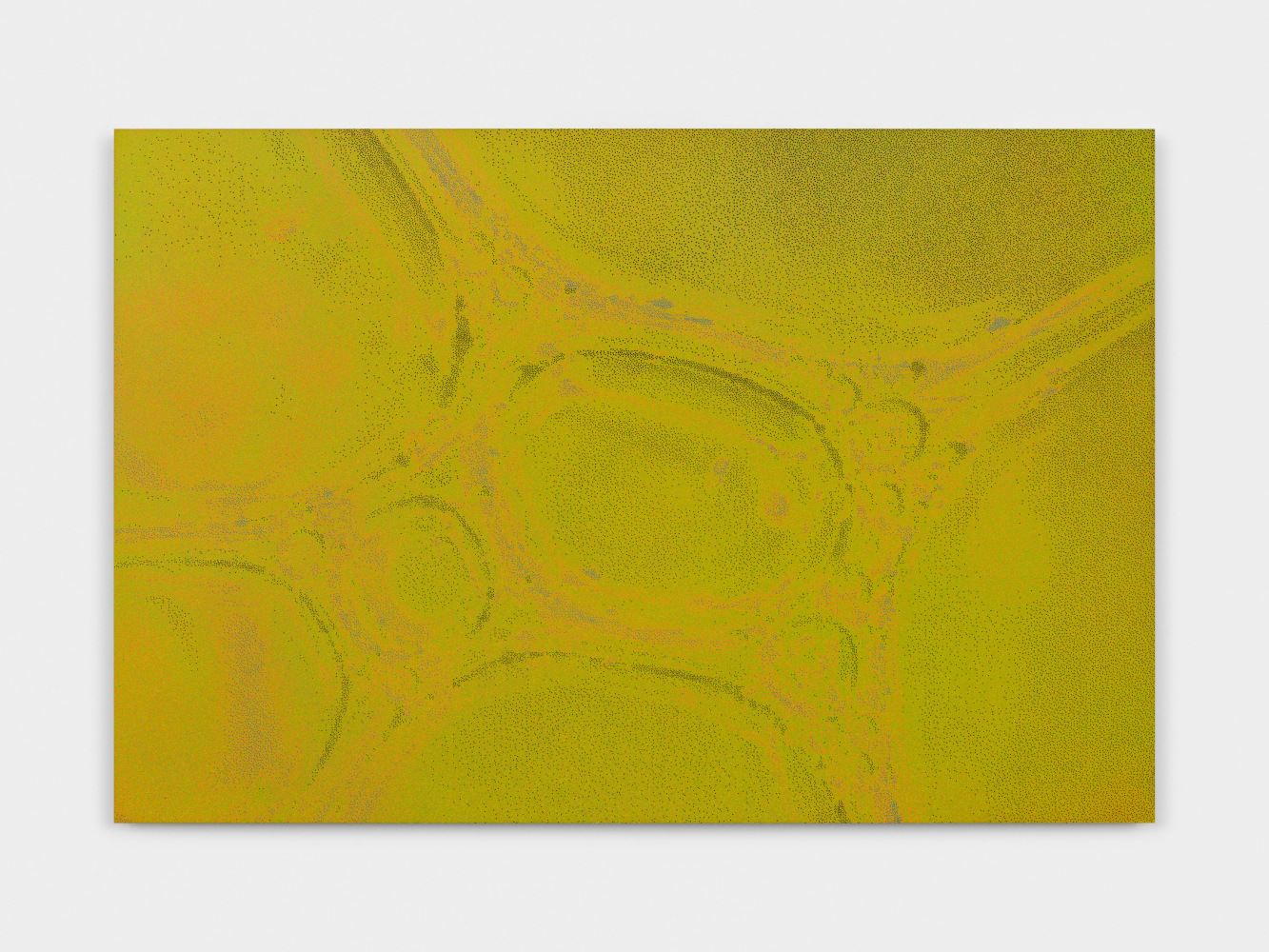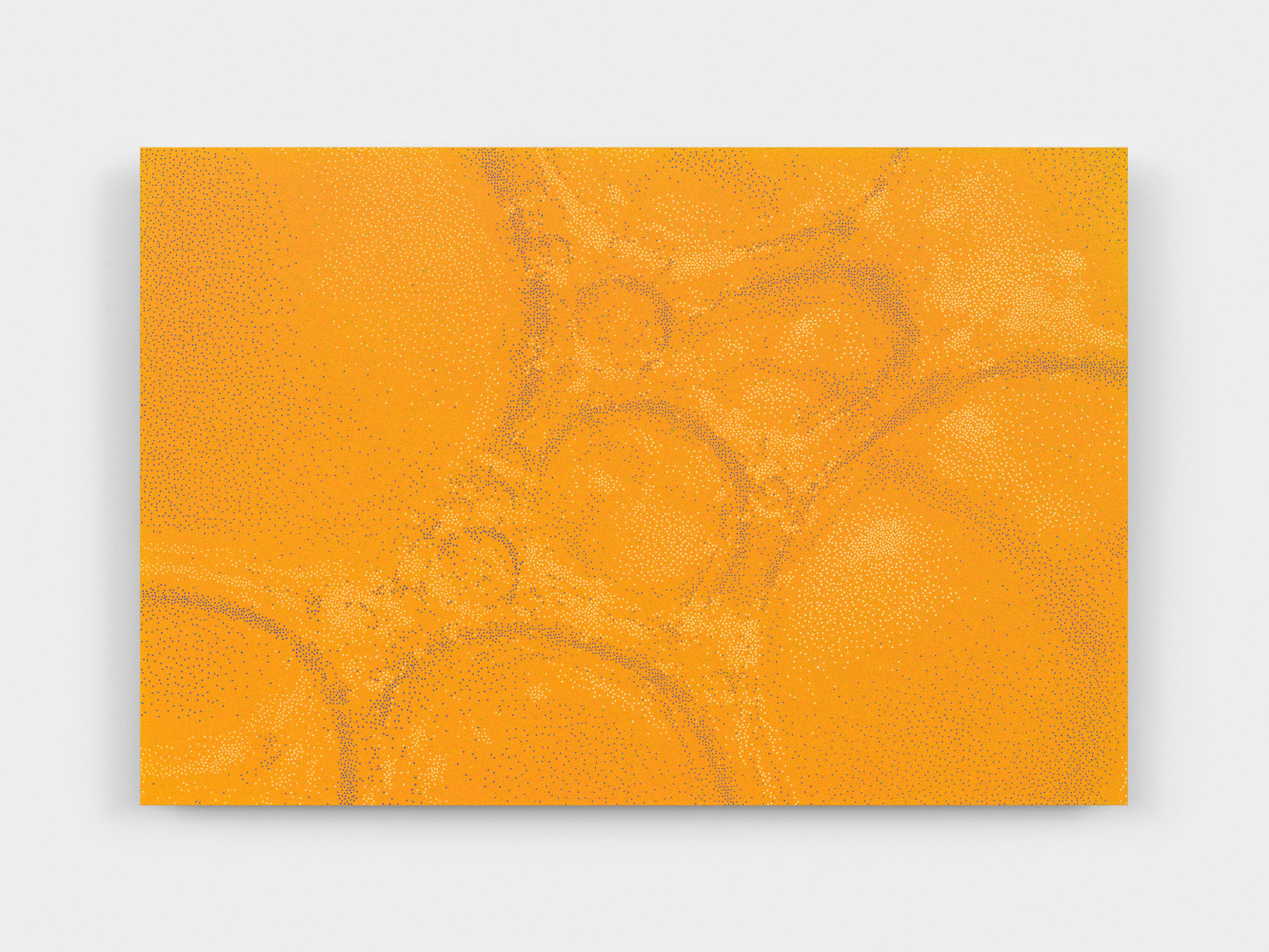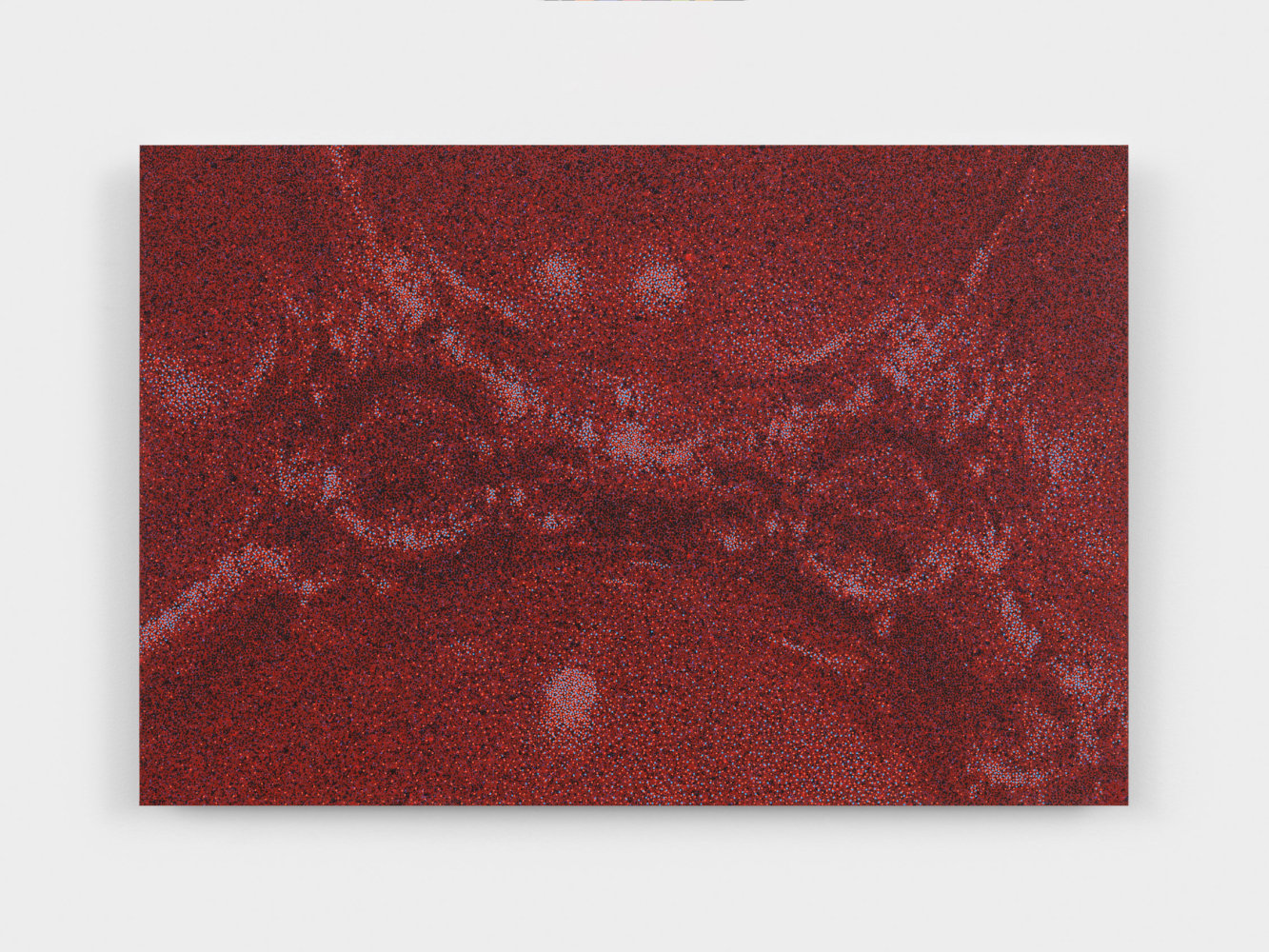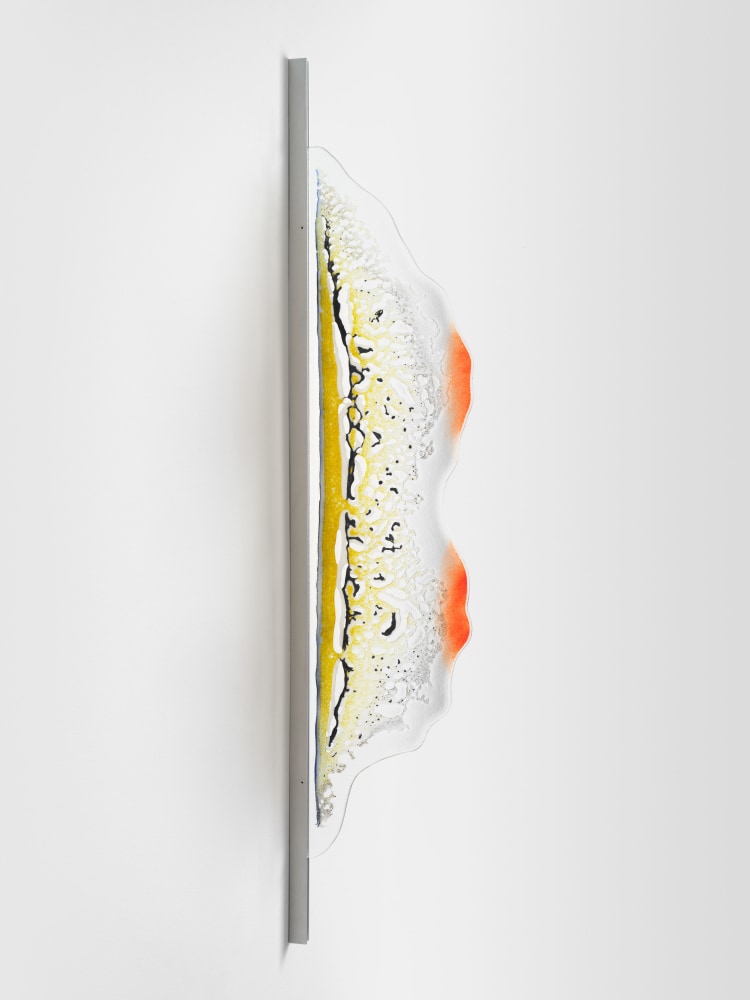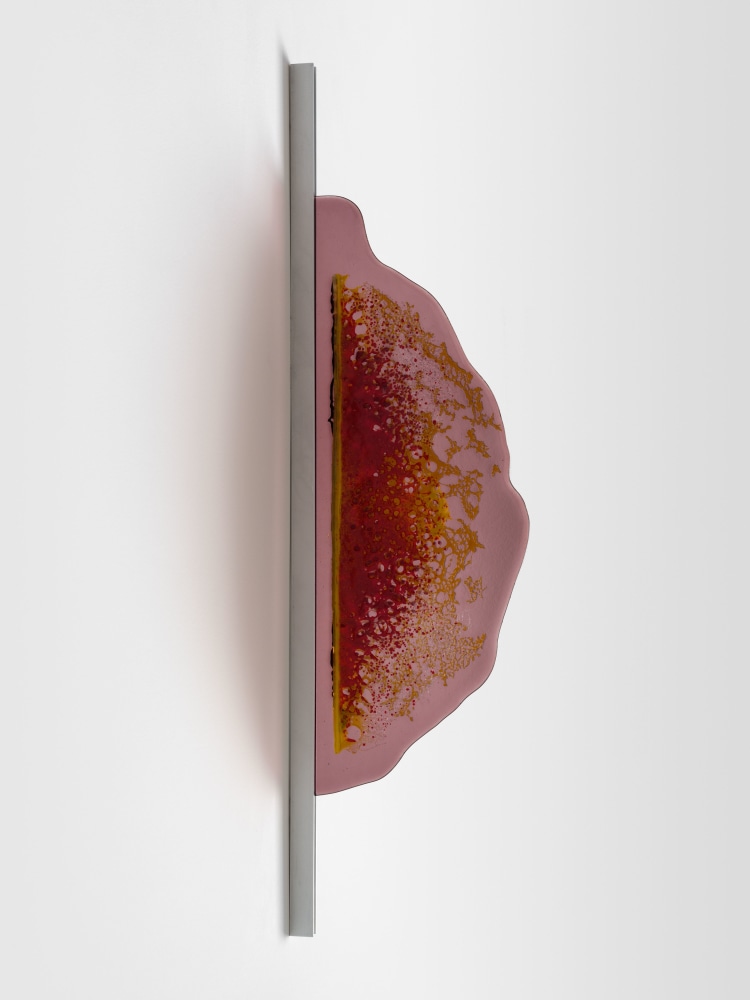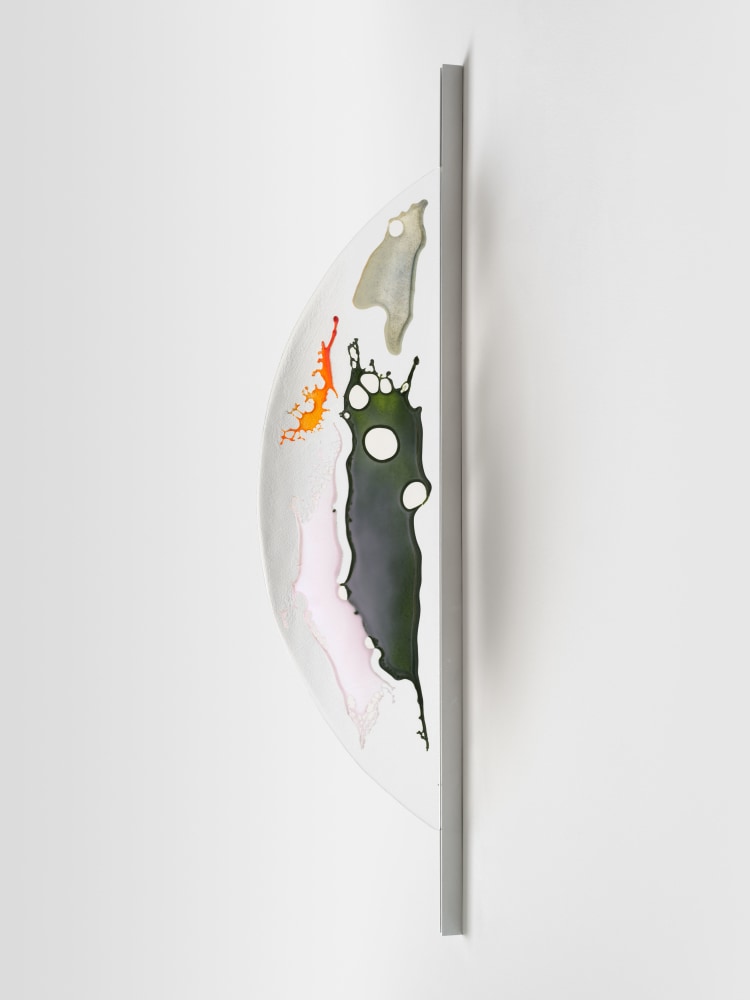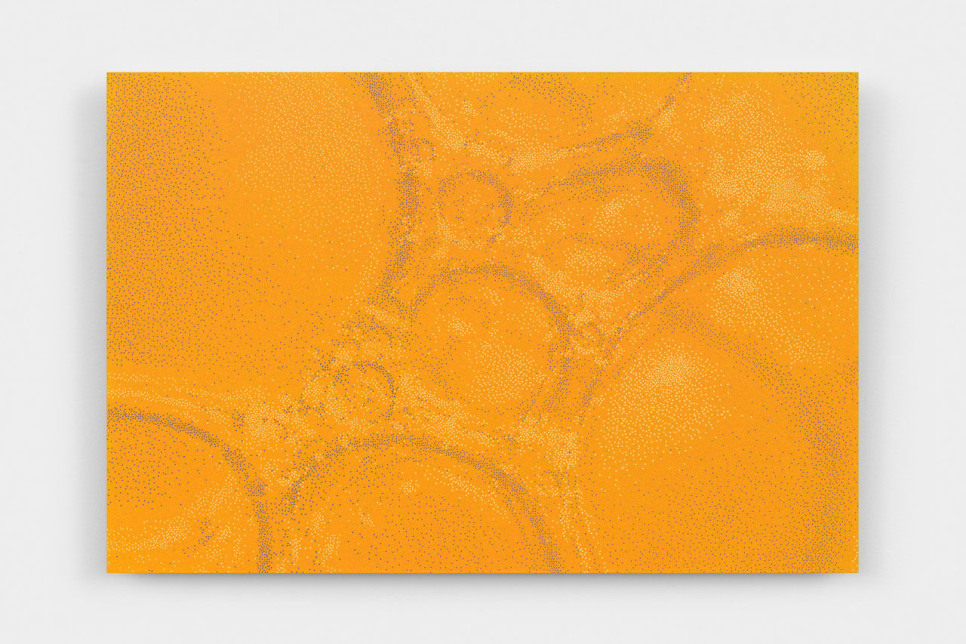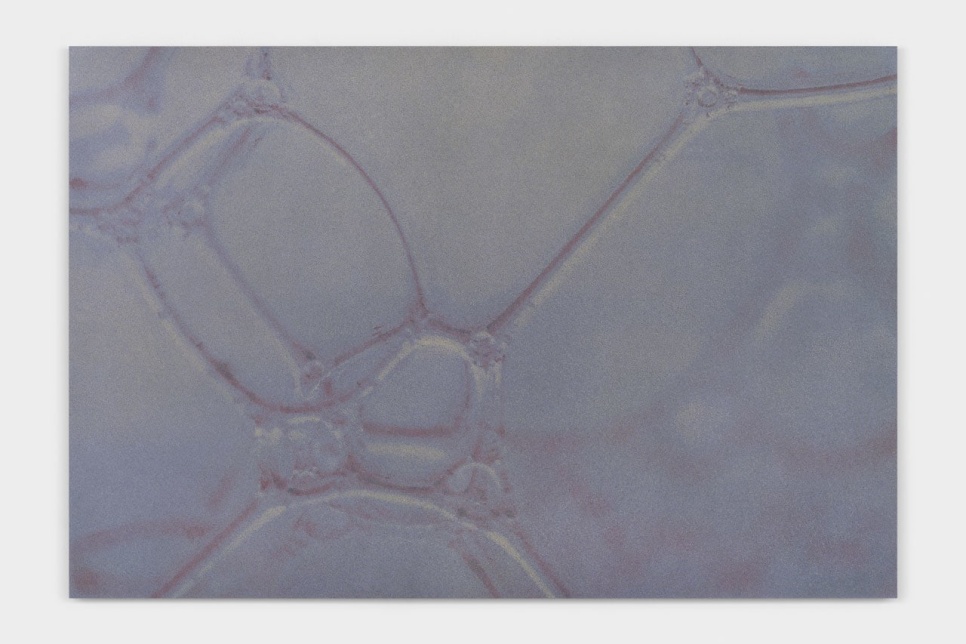Tauba Auerbach will debut several new series of works which capture fleeting moments of order in paintings of foams, molten glass and woven beads. The exhibition is an expression of curiosity about spontaneously emergent structure, tendency and habit, and their intersection with the notion of free will. The work brings together historical rendering techniques like pointillism and midtone drawing with microscopy, algorithmic image processing, off-loom weaving, spraying techniques and mathematical surface modeling. This will be the artist’s fourth one-person exhibition at the gallery, and the first since their critically-acclaimed survey S v Z at the San Francisco Museum of Modern Art in 2021.
Hoping to be convinced of the reality of free will, Auerbach listened to a series of lectures in defense of its existence by the late mathematician John Conway. Best-known as the inventor of The Game of Life, a deterministic game using cellular automata, Conway would seem to be an unlikely advocate, but grounds his argument in quantum mechanics and relativity, proposing that particles also have free will.
A new series of paintings based on photographs of foam taken through a microscope use a pointillist technique to render arrangements of bubbles in the process of constantly repositioning themselves. Particulate fields of color yield to denser aggregations of dots that subtly define the contours of a transparent, unstable material. On nearby tables, tiny spheres come together to form tubes, ribbons and unusual surfaces, in sculptures woven from thousands of glass beads. The pieces continue the artist’s fond relationship with weaving, using a long existent off-loom technique that was further developed by chemist Bih-Yaw Jin and mathematician Kazunori Horibe to model molecules and topological surfaces. In the front gallery, new glass sculptures, made in the artist’s basement kiln, use surface tension and heat to draw a lace-like behavior from powdered glass.

